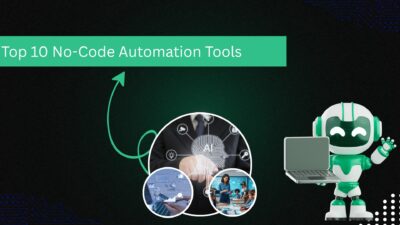How AI Is Getting Smarter in New Ways
Artificial Intelligence (AI) has changed the way we work, live, and even think—but the journey is far from over. As AI systems take on more complex tasks, from driving cars to diagnosing illnesses, there’s a growing need for brain-like computing that works faster and more efficiently. This is where neuromorphic computing and hybrid computing technologies step in to shake things up.
What is Neuromorphic Computing?
A Computer That Thinks Like a Human Brain
Neuromorphic computing is a new way to build computers that mimic the way our brains work. Instead of using traditional computing methods, it uses brain-inspired systems called “spiking neural networks” (SNNs). These systems can process information faster and with less energy. Think of it as designing machines that don’t just react like computers but “think” more like humans.
For example, imagine how easily humans recognize faces in a crowd, even in poor lighting. Neuromorphic chips aim to copy these abilities by connecting “neurons” and “synapses” similar to how our brain does.
Smarter Performance, Less Energy
Neuromorphic chips are built to handle tasks that involve pattern recognition, decision-making, and real-time response. And the best part? They use way less power than today’s conventional chips. That’s a big deal—especially for AI systems in mobile devices, robotics, or edge computing, where energy efficiency is crucial.
The Role of Hybrid Computing
Blending the Best of Digital and Analog
While neuromorphic computing works great for certain problems, it’s even more powerful when teamed up with traditional computing methods. This is where hybrid computing comes in. Hybrid systems combine both conventional digital processing (like what’s in your laptop) and brain-like analog processing (how your brain handles information).
This way, developers can get the speed and accuracy of digital computing with the energy savings and flexibility of neuromorphic models. It’s a win-win!
Why Hybrid Systems Matter for AI
AI applications are becoming more complex, often juggling tasks like vision, speech recognition, and decision-making all at once. Hybrid computing allows each part of the system to work on what it does best. For example, the neuromorphic part can handle quick reactions and sensory data, while the traditional processor manages more structured tasks like logic and planning.
So you’re basically getting both efficiency and intelligence in one system.
Real-World Applications are on the Rise
Making Smarter Devices
Imagine a smartphone that listens more like a person and sorts your photos with the intuition of your brain. Or a self-driving car that can react instantly, not just based on code but also on pattern recognition and learned behavior. That’s the potential of combining neuromorphic and hybrid computing.
These technologies are already being tested in:
– Autonomous vehicles
– Smart wearables
– Factory robots
– Healthcare monitoring devices
Even small sensors in your fitness tracker could one day be powered by neuromorphic chips for smarter, real-time analysis.
Faster and Greener Solutions
One of the biggest benefits of neuromorphic and hybrid approaches is their energy efficiency. Traditional AI systems need massive data centers and lots of electricity. By using systems that think more like our brain—which runs on just about 20 watts—AI can become more sustainable.
This shift can reduce both the physical space needed for computing systems and the environmental footprint we’re leaving behind.
Challenges Still Ahead
It’s Not All Smooth Sailing Yet
As promising as neuromorphic and hybrid computing sound, there are still hurdles. Current software and programming languages weren’t built for these new systems. So, developers are working hard to redesign how we build and train AI models.
Also, spiking neural networks are still being researched, and it’s not easy to train them compared to traditional neural networks. This means creating tools, frameworks, and platforms that support these systems is a top priority.
Yet with major tech companies and research labs pouring time and money into these technologies, progress is moving fast.
Creating a New Ecosystem
To fully adopt these technologies, we’ll also need changes in how we think about hardware and software design. Educational institutions are stepping up too, offering specialized courses and research programs focused on neuromorphic engineering and AI innovation. These efforts could help build a new generation of experts ready to drive the future forward.
The Future of AI is Brain-Inspired
Why This Matters for Everyday Life
You might be wondering: “How does any of this affect me?” The answer is simple. These technologies can lead to smarter, faster, and more helpful AI systems that improve everything from the way your phone works to how we approach healthcare and transportation. They also pave the way for more secure, efficient computing with lower power needs, which is something we all benefit from.
Key Takeaway
Neuromorphic and hybrid computing aren’t just buzzwords—they’re game changers in the world of artificial intelligence. By blending brain-inspired design with traditional computing power, they’re poised to take AI to the next level.
Whether it’s smarter devices, greener tech, or life-saving innovations, one thing is clear: The future of AI won’t just be about machines that compute—it’ll be about machines that truly understand and adapt, just like us.
So next time you hear about a breakthrough in AI, you might want to ask: “Is this the work of a smarter brain—or a smarter computer?”
⟶ Stay tuned. The best of AI is yet to come.



